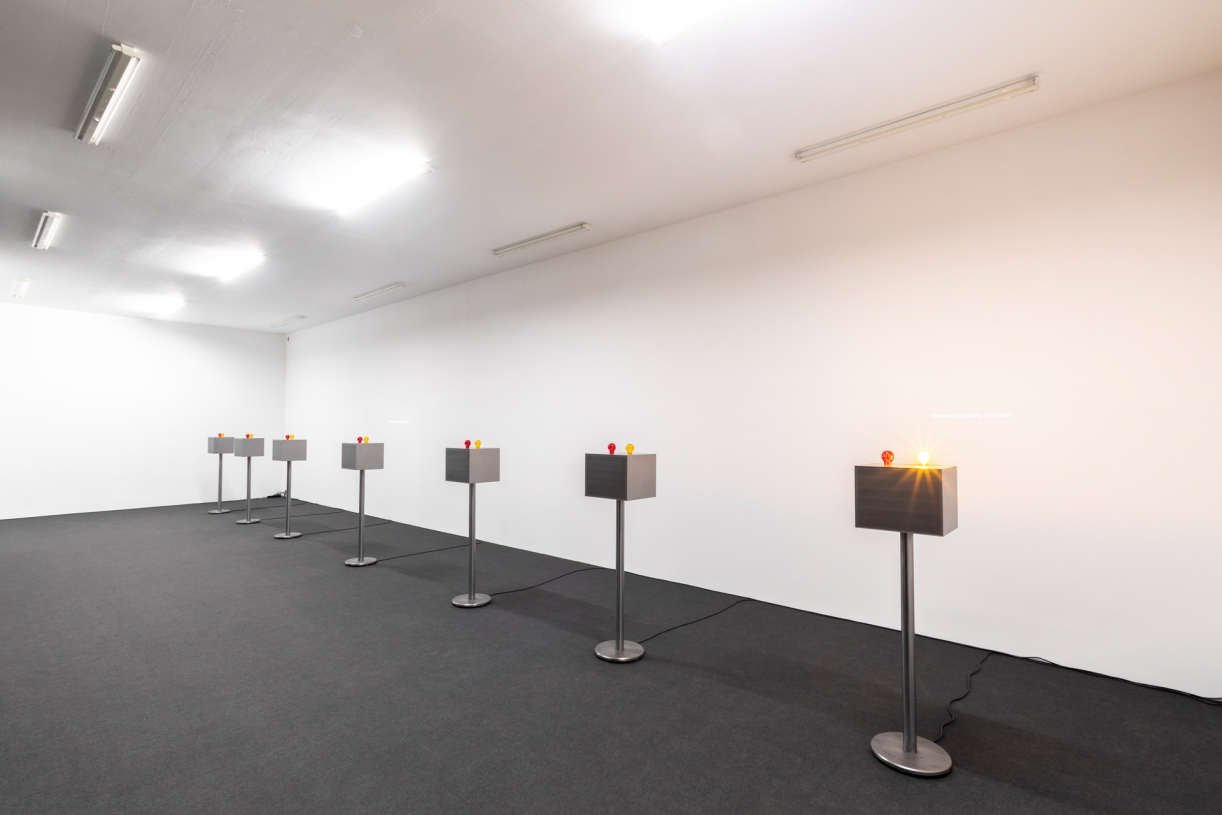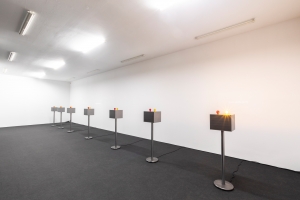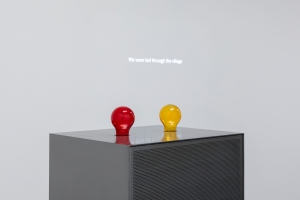The Witness-Machine Complex, 2021
The Witness-Machine Complex, 2021
The Witness-Machine Complex examines the role of translators and the electronic acoustic infrastructure deployed during the Nuremberg trials in 1945/6, which set a precedent for all further international trials. The newly developed electronic audio technology enabled the simultaneous translation of the trial proceedings into Russian, French, German, and English. Abu Hamdan’s scenography at the Kunstverein invokes the infrastructure of the Nuremberg trials to historicise the now inextricable relation between testimony and the technologies by which it is disseminated and distorted.
Even though they were of great importance to the procedure, there are no intentional recordings of the translators’ work during the trials. The translators were not featured in the filmed footage of the trial either, yet their presence was captured visibly by flashing yellow and red lights. These lights were the instruments the translators used to slow down or pause the speed of the sound that flowed into their headphones. They could operate yellow and red light bulbs built into the witness stand and the prosecutor’s podium. Flashing the yellow light once signaled the order to “speak more slowly,” while three quick pulses meant that the speaker should raise their voice. One red flash indicated that a sentence needed to be repeated because an utterance was incomprehensible or untranslatable. When viewing footage in which the bulbs flash—instances of languages in negotiation—it becomes evident that these moments have been removed from the transcripts of the trial. This makes it seem as if the trial flows seamlessly from voice to voice. Abu Hamdan has collated a collection of 7 of these moments: In one example a light flashes red to signal the order to repeat, totally derailing a witness’ train of thought causing a minute of silence where agents of court plead and prompt his speech to return to no avail. In defiance the Nazi industirialist Walter funk accelerates his speech and raises his voice while the translator jumps the light switch rapidly in contestation. Yet, when Marie Vaillant-Couturier comes to testify and is interrupted by the flashing light, she begins to speak in a slow pace staccato in which each syllable is over emphasized,. The robotic performance combined with the violence she describes sounds dissonant and yet it is perfectly tuned to the machine of justice. For the exhibition at the Kunstverein Nuremberg, Abu Hamdan has created a sound and light installation that restages the effects of these interruptions and shows how new practices for listening to and recounting testimony were inaugurated at Nurnberg. The installation is a device to tell a history of the trials only through its interruptions.
This body of work also contains documentation of Abu Hamdan’s performance, entitled, A Thousand White Plastic Chairs (2020).
Lawrence Abu Hamdan, The Witness-Machine Complex, 2021, 7 steel stands, 7 video projections, 7 audio channels, 14 light bulbs, Various dimensions, Edition 6 + 2 AP, Installation view Kunstverein Nürnberg 2021







